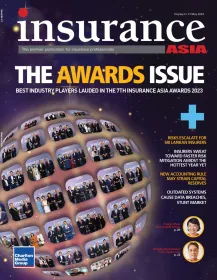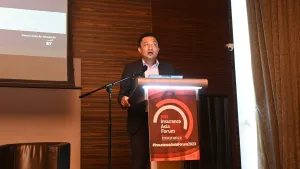
South Korea reinsurance industry to reach $11.9b in 2026
Climate change and regulatory developments continue to be their drivers.
The South Korean reinsurance industry will grow at a compound annual growth rate (CAGR) of 7% from KRW9.6t ($8.4b) in 2021 to KRW13.4t ($11.9b) in 2026, in terms of gross written premiums (GWP), supported by climate change and positive regulatory developments, according to GlobalData.
GlobalData reveals that the South Korean reinsurance industry registered a 6.6% growth in 2021, recovering from a subdued 0.7% growth in 2020 due to the economic impact of the COVID-19 pandemic. General reinsurance accounted for 78% of the country’s reinsurance market, while life reinsurance occupied a share of 22%.
“Growth in 2021 was supported by the introduction of coinsurance in 2020 that allowed insurers to transfer various financial risks such as investment risk, interest rate risk, insurance risk, etc. to reinsurers. Also, the country’s susceptibility to natural disasters has increased insurers’ catastrophic risk and forced them to increase the portion of ceded premiums with reinsurers. This has also supported the reinsurance growth in 2021,” Swarup Sahoo, an insurance analyst at GlobalData, said.
ALSO READ: Is climate risk getting too hot to handle for reinsurers?
The reinsurance market growth in South Korea will be supported by the expected roll out of the new capital regime, Korean Insurance Capital Standard – K-ICS starting from 2023, along with the continuation of the existing IFRS-17 regime.
Insurers will be required to maintain higher risk-based capital as per the new regime, which will result in squeezing their capital buffer and increasing the dependence on reinsurance. Reinsurers will also benefit from coinsurance as it allows insurers to manage capital effectively by transferring risks.
Also, the introduction of compulsory liability insurance for medical device manufacturers and importers in 2022 is expected to support general reinsurance growth.
“The rising frequency of natural disasters such as floods and landslides due to climate change will also support reinsurance growth. An example of that includes the recent floods in August 2022, which have registered motor insurance claims worth KRW158.3 billion,” Sahoo said
Lower motor claims driven by a lower number of accidents and a strong risk-based capital rate have kept motor insurers less dependent on reinsurance until now. However, the increased frequency of extreme weather events and high losses arising from such events will prompt motor insurers to consider reinsurance in the future.
“Demand for reinsurance will remain high over the next few years, supported by economic recovery and positive regulatory developments that will bring in more insurance lines into the purview of reinsurance,” Sahoo concludes.











 Advertise
Advertise












